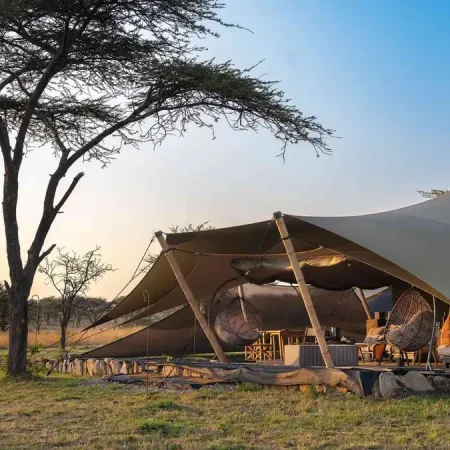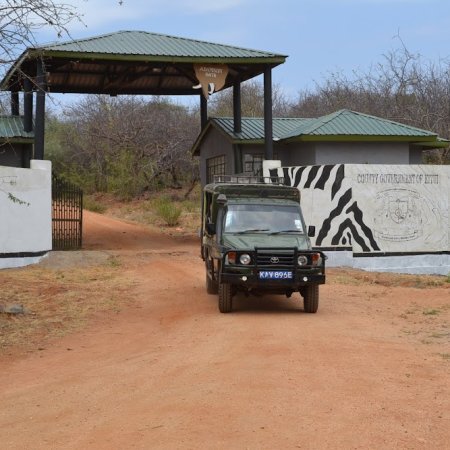Understanding Zebra Species: Discover the Different Breeds and Habitats

Zebras are one of Africa’s most iconic wildlife species, instantly recognized for their striking black-and-white stripes. But not all zebras look alike. Understanding the different zebra species and their habitats can greatly enhance your safari experience.
From the widespread Plains Zebra to the endangered Grevy’s Zebra, each species has unique patterns, behaviors, and preferred environments. Zebras can be found in numerous parks and reserves throughout Kenya, with the most notable being Masai Mara National Reserve, Samburu National Reserve, Amboseli National Park, Nairobi National Park. among others
Major Zebra Species in Africa
1. Plains Zebra (Equus quagga)
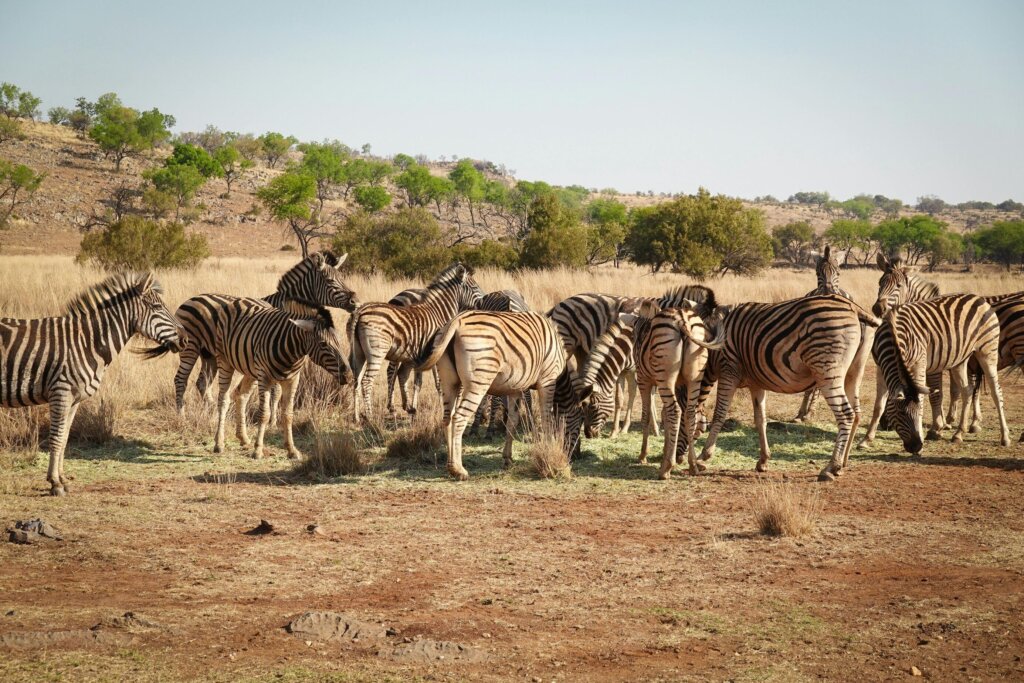
The species is commonly found throughout the East and Southern regions of Africa, including countries such as Kenya, Tanzania, and Botswana, where vast grasslands and open savannahs provide ideal grazing environments.
Pattern: Characterized by bold black-and-white stripes that extend uniformly across the body and continue seamlessly down to the belly, this distinctive coat pattern provides both camouflage and species recognition among individuals.
Herd Size: These zebras typically form large, cohesive herds that can often be seen roaming together across open savannahs and expansive grasslands, where safety in numbers helps protect them from predators.
Tip: When observing wildlife, look for groups of zebras grazing together near plains and water sources, especially during early morning or late afternoon hours when they are most active and visible. Their striking appearance and social behavior make them one of the most recognizable and captivating animals of the African landscape.
2. Grevy’s Zebra (Equus grevyi)
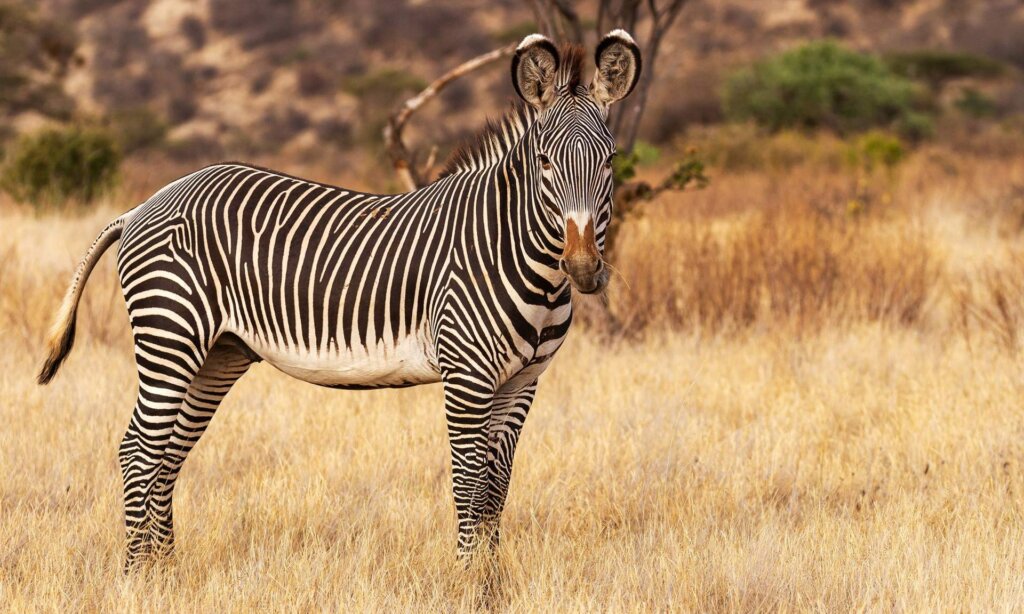
`Region: This endangered species inhabits the northern regions of Kenya especially Samburu national reserve and parts of Ethiopia, thriving in dry, rugged, and semi-arid landscapes where few other large grazers can survive. These areas are often characterized by rocky terrain, sparse vegetation, and limited water sources, making the species well-adapted to harsh environmental conditions.
Pattern: Distinguished by its narrow, closely spaced black stripes that contrast sharply against a white belly, this zebra also features large, donkey-like ears that enhance its hearing and help with heat regulation in hot climates. The unique striping pattern provides excellent camouflage in the broken light of arid habitats.
Status: Classified as Endangered, this zebra has a much smaller population compared to the Plains Zebra, largely due to habitat loss, competition with livestock, and limited access to water. Conservation efforts are ongoing to protect remaining populations and their fragile ecosystems.
Tip: To spot this rare species, look in arid and semi-arid regions near dry riverbeds or sparse patches of vegetation, where they can often be seen grazing or moving in small groups. Their elusive nature and preference for remote habitats make sightings especially rewarding for keen wildlife observers.
3. Mountain Zebra (Equus zebra)
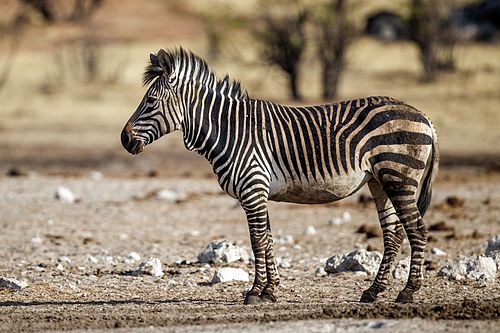
- Region: This zebra species is primarily found in the south-western parts of Africa, particularly in Namibia and South Africa, where the terrain is rugged and the climate is generally dry. These regions offer the rocky hills, escarpments, and mountain slopes that perfectly suit the species’ specialized adaptations and lifestyle.
Pattern: It is easily recognized by its bold black stripes interspaced with distinct shadow stripes, which create a subtle brownish tint between the main bands. The white underbelly further distinguishes it from other zebra species, while its sleek coat and strong build are well-suited for navigating steep, uneven landscapes.
Habitat: Preferring rocky hills, mountainous terrain, and arid plateaus, this zebra is adapted to environments where grass cover is sparse but nutritious. Its sure-footedness allows it to climb steep slopes in search of grazing areas and water sources, often avoiding open plains where predators are more common.
Tip: To observe this species in the wild, visit protected mountainous reserves or national parks within its range, especially in the early morning or late afternoon. They are usually seen in smaller, tightly bonded herds, often composed of a stallion, a few mares, and their young, making them both elusive and fascinating to watch in their rugged, scenic habitats.
Tips for Spotting Zebras in the Wild

-
Look for distinctive stripes: Each species has unique patterns.
-
Observe habitats: Plains zebras prefer open grasslands, Grevy’s favor arid regions, and Mountain zebras are in hilly areas.
-
Check herd size: Plains zebras form large herds; Mountain and Grevy’s zebras usually smaller groups.
-
Use binoculars: Helps to see subtle differences from a distance.
-
Keep safe distance: Always respect wildlife boundaries.
Enhance Your Safari Experience
Identifying different zebra species adds an educational and memorable aspect to your African safari. Seeing Grevy’s zebras in samburu or a mountain zebra on rocky hills is an experience that connects you to Africa’s wildlife diversity.
👉 Book Your African Safari Today and Spot Zebras in Their Natural Habitat!
Enjoy close encounters with zebras, giraffes, lions, elephants, and more across Kenya and Tanzania.

